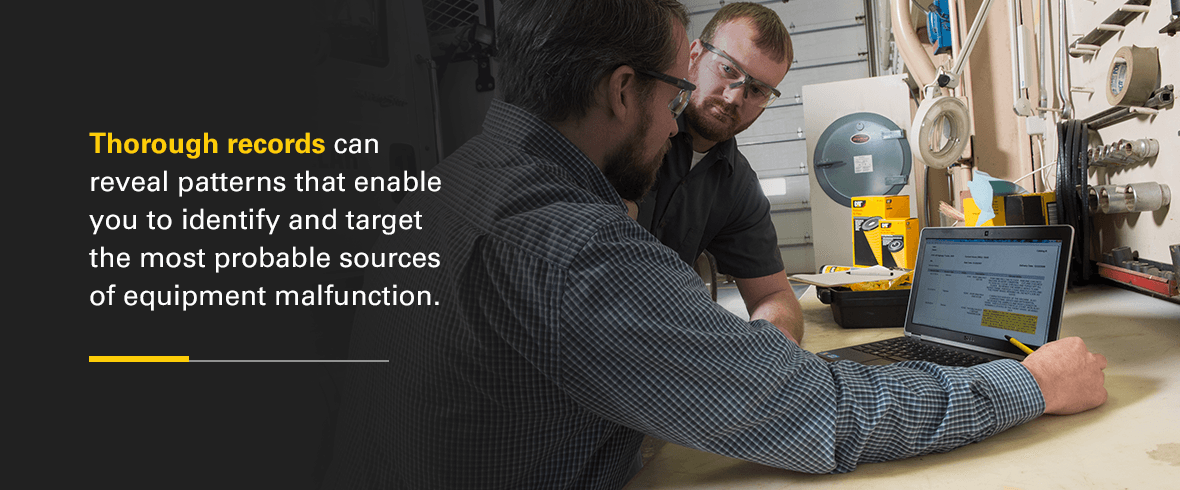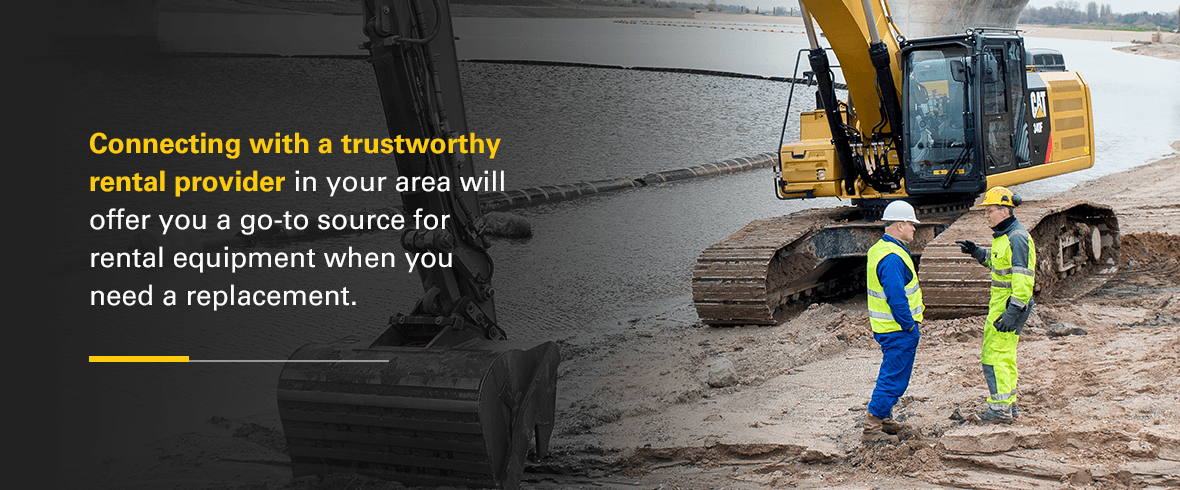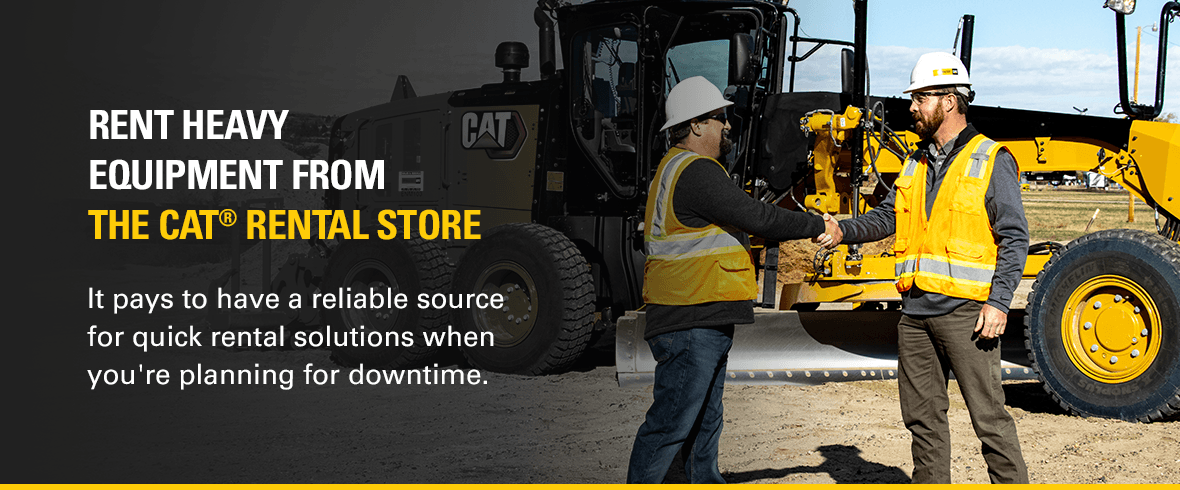
How to Reduce Equipment Downtime and Maintenance Costs
When a machine is out of service, it isn’t recovering its owning and operating costs. Your schedule slips. While you can’t prevent every outage, you can plan ahead and shrink the impact. The steps below help you cut risk, keep work moving, and protect your budget.
The Cost of Downtime
Because so many variables are in play, you won’t know the exact cost of a down event until it happens. A simple way to estimate is to multiply the machine’s hourly ownership expense by the time it’s down. For example, if a unit costs $25 per hour, 10 hours down is $250. Collateral costs often dominate: labor, associated equipment, and the price of a temporary replacement.
That’s why prevention and planning matter, both for keeping crews productive and for saving your organization money while reducing equipment costs.
Planned vs. Unplanned Downtime
Planned downtime is unproductive time you can schedule and budget for in advance. Because you can plan, you can also minimize it. Common planned downtime:
- Scheduled maintenance: Routine upkeep lets you catch issues early and line up a temporary replacement if needed.
- Transportation: Moving a machine between jobsites is idle time, but it supports productivity elsewhere.
- Scheduled inspections: Pause for safety or site checks. Use findings to get ahead of issues that could cause breakdowns.
Unplanned downtime is harder to predict and tends to cost more. When a critical unit fails, crews may have to stop until you repair it or find a replacement. Common causes:
- Workplace accidents: Incidents can halt work while teams respond and investigate.
- Equipment breakdowns: Reactive repairs cost more than planned maintenance, especially across large fleets.
- Severe weather: Sudden changes can force a pause. Keep low‑priority tasks ready to maintain momentum.
The best way to limit these costs is to build a backup plan before anything goes down.

7 Ways To Prevent Unplanned Downtime
Unexpected breakdowns are a leading cause of unplanned downtime, and they often trace back to irregular maintenance. A strong preventive maintenance program reaches beyond fluid changes and hour‑based service. It standardizes inspections, usage, and fleet management.

1. Prioritize proactive maintenance
Create a preventive maintenance plan for each machine. Set intervals using past history or guidance from your fleet systems. Include regular fluid analysis to extend component life and spot issues early. Follow recommended intervals to keep protection in place. Skipping maintenance can void warranties and raise future costs.
2. Conduct daily inspections
Ask operators to perform walkarounds at the start and end of shifts. Consistent checks help you find small problems before they escalate and lower maintenance costs.
What to include on the checklist:
- Air and oil filters
- Greasing points
- Fittings
- Undercarriage
- Fluid levels
- Transmission fluid wiring
- Lights and horn
- Gauges
- Power cables
You can use paper or go digital. The Cat® Inspect App integrates with other Cat data systems so you can assign inspections and review results in real time. It also helps you manage each machine’s repair budget.

3. Gather lots of data
Good records keep costs low while you maintain high productivity. Patterns in the data point to likely failure sources, help techs prioritize parts, and shorten repair time.
Centralize your information with tools like the Cat App so teams in the field and office stay aligned. Use mandatory work orders to control purchases and understand what was bought by whom and why.
4. Analyze past down events
Track when, why, and how long each down event lasts. Create a work order code for reported emergency down (RED) events and review them for patterns. If one unit fails more often than others on the same site, target that area with deeper diagnostics or training.

5. Use equipment maintenance software
Move beyond spreadsheets and paper. A program in the Cat equipment management suite can take the guesswork out of intervals and reduce breakdowns and costs. It also flags usage outside normal parameters so you can coach operators before wear accelerates.
Solutions like VisionLinkTM sends near real‑time machine data to your phone or laptop. You can build performance reports and act on early warnings before a breakdown.
Fleet software like My.Cat.Com and the Cat App often show a fast return on investment because all your equipment data lives in one place you can access anywhere.
6. Add features to your equipment
High‑tech features can raise safety and productivity to lower total costs. Examples include:
- Cat Payload: onboard weighing to help operators hit target loads quickly.
- Cat Command: remote operation to keep people out of hazardous areas and maintain production.
- Cat Detect: cameras and sensors that improve awareness and reduce accident risk.
It’s best to include tech packages at purchase time for value, but they can pay off even when added later — especially when safety and uptime are priorities.
7. Invest in operator training
Maintenance reduces the chance of breakdowns and so does proper operation. Training helps operators get the most from machines without excess wear or fuel burn. It also supports a safer site, which limits downtime and costs from accidents. Ask your dealer what operator training is available.

How To Plan For Downtime
Even with strong prevention, unexpected downtime happens. A simple plan keeps teams productive and costs contained. Work with your dealer and a reliable rental provider so you have backup resources when a unit is down.
Build a practical contingency plan
- Keep common spare parts, fluids, and filters on hand for quick fixes.
- Stage a list of low‑priority tasks for crews during pauses: deliveries, inspections, and basic maintenance on other machines.
- Define a protocol for accessing replacement equipment. This usually means coordinating with your rental provider.
Connect with nearby technicians
Whether you use in‑house techs or a local mechanic, line up extra help for peak demand. Many dealers offer field service so a technician comes to your site. That can save transport time and help you resume work sooner.
Partner with a reliable rental provider
A trusted rental source gives you a go‑to option for fast replacements. You can reserve a machine for planned service windows and secure an emergency unit for surprise breakdowns. You pay the quoted rental plus fuel; the provider handles transport. Some may charge insurance or deposits, which are easy to include in a fixed rental price.
For planned and emergency work, renting equipment during periods of downtime helps you avoid major losses, maximize productivity, and keep schedules intact.

Use rentals to fill equipment gaps
For planned downtime, schedule a rental so you don’t miss a beat while your machine is in the shop. For unplanned downtime, a dependable provider can often get you back on schedule within hours.
What to look for when evaluating a rental provider:
- Transparency: Ask for a full billing summary with all rates and fees.
- Wide selection: Larger networks make it easier to source the exact model you need.
- End‑to‑end service: Sourcing, delivery, pickup, and billing are handled by the provider.
- Equipment quality: Inspect condition and ask about maintenance frequency and last service date.
- Consulting: Look for a partner who recommends the right model for your scope and budget.
- Customer service: Open, friendly, and attentive support is a strong signal you can rely on the team.

Rent Heavy Equipment from The Cat® Rental Store
When you plan for downtime, it pays to have a fast, reliable source for rental solutions. The Cat Rental Store offers a large inventory of Cat rentals plus more than 70 other brands like Sullair, Vermeer, and Allmand.
With a dealer network of more than 1,300 locations worldwide, we can locate the right type and size for your job. If you need the unit longer than expected, you can extend the contract. Just ask your local dealer about flexible terms.
Browse available rental equipment online or find a local branch near you.
Find The Cat Rental Store Near You